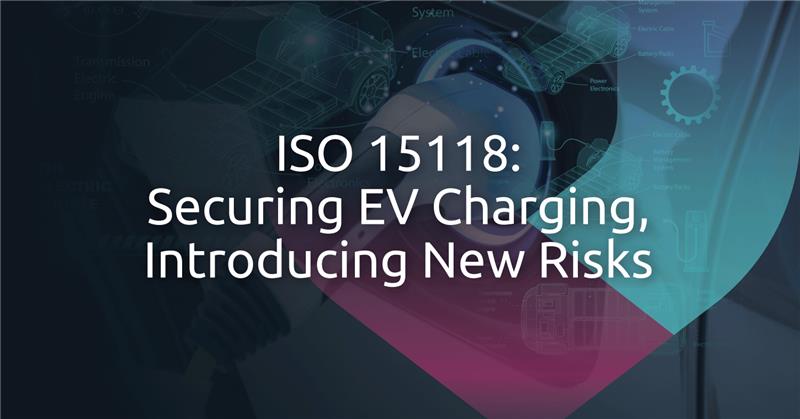
The rapid rise of electric vehicles (EVs) is not only transforming mobility but also accelerating the push toward a cleaner, more sustainable future. But this growth also brings new challenges. By 2040, more than 600 million EVs are expected on the world’s roads, a surge that will place unprecedented pressure on electricity grids.
To help manage this shift, the International Organization for Standardization (ISO) introduced ISO 15118, a standard that enables innovations such as smart charging and vehicle-to-grid (V2G) communication. These features promise to ease grid strain and make EV charging more seamless, secure, and user-friendly.
Figure 1. Released in 2014, ISO 15118-2 introduced these innovations: smart charging, Plug & Charge, and encrypted communication.
But is ISO 15118 enough to secure EV charging?
In the research paper “Securing the Charge: Hidden Risks in ISO 15118”, we explain why securing the charge requires more than mere compliance. The paper highlights how ISO 15118:
- Strengthens security by securing communication between EVs and charging stations and shifting sensitive operations to e-Mobility Service Providers (eMSPs)
- Resolves long-standing cybersecurity issues while also leaving some risks unaddressed
- Still leaves charging stations exposed, making them one of the most vulnerable elements in the ecosystem
- Requires a multi-stakeholder approach, from car manufacturers (OEMs) and station manufacturers to grid operators and eMSPs, to build a more secure and more resilient EV charging infrastructure.
To uncover more insights, download “Securing the Charge: Hidden Risks in ISO 15118”, a research paper authored by Salvatore Gariuolo and Rainer Vosseler of Trend Micro FTR Research, published for VicOne.